Protecting the girl child: The need for an anti-FGM law in India
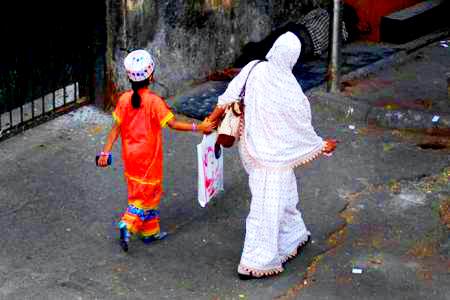
By Anjali Shah “Girls are not property. They have the right to determine their destiny.” – Anthony Lake, Former Executive Director, UNICEF Religious dogmas have gained focus with women coming forward to challenge the subversion and repression that they have been subjected to for decades. This has brought into the limelight the practice of female genital mutilation (FGM), which thrives in the shadows of our society with little recognition. It is the fear of social exclusion that has prevented women from lifting the veil of secrecy, resulting in more girls being victimized. Some women of the Bohra Muslim community, where FGM is widely practiced, have justified FGM to be their religious and cultural right. However, a practice that demands such standards of purity from girls and women so as to remove a part of their body to curb their sexuality raises important questions pertaining to their right to live with dignity, equality, bodily integrity, and also their right to freedom from inhumane treatment. It may be argued that FGM can be practised under Article 25 of the Constitution of India that guarantees the right to religious freedom. However, this is not an unfettered right but is subject to the constitutional restraints of public order, health and morality. The content of morality is founded on the four precepts emerging from the preamble, i.e., justice, liberty, equality and fraternity, which assures dignity for human life. The test of constitutional morality is to bow to these norms. FGM is a practise that reduces a girl child to chattel. It makes her right to live with dignity conditional upon actions beyond her control. Moreover, it is a practise which can cause life-long impairment, including difficulties with urination, kidney damage, infertility and psychological problems. Thus, taking into account the consequences of FGM on the life and well-being of a girl, FGM may not justify itself to be a practice validated on the basis of any religious tenet. While some people categorise FGM as discrimination against women, it is often the women of the community who are the perpetrators of this practice. It thus boils down to FGM being a facet of religion governed by individual belief. Autonomy is the premise for religious freedom and only stands legitimised when applied to one’s own choice to undergo FGM. It cannot be used as a blanket protection to permit actions, which can be categorised as a crime causing grievous hurt under the criminal statutes of the country. The Supreme Court of India has observed that depriving freedom to choose on the basis of faith is impermissible. Given that FGM is largely carried out on girls, who have little or no knowledge of the atrocity they are being subjected to, this results in an implicit denial or deprivation of the freedom to make a choice to undergo cutting. This appears to be in direct violation of Article 21 of the Constitution of India. The focus on elimination of FGM by international organizations has driven several countries to enforce laws against FGM. Sadly, in India, neither the political leaders nor the judiciary is playing its part to ban FGM. The Public Interest Litigation filed in 2017 before the Supreme Court of India to enact an anti-FGM law is still pending after being referred to a larger bench. Additionally, the Minister for Women and Child Development in 2017, who once sought a ban on FGM, later released a statement to say that there is no data in existence of FGM in India. From the surveys conducted on FGM in India, it is apparent that girls and women are willing to raise their voices against FGM, but are prevented many times from doing so due to the fear of expulsion from the community. To ensure effective support, a specific anti-FGM legislation is of utmost significance. Such a law may play an important role to instill fear in the minds of the people who allow FGM or are indifferent towards it. It may serve as a tool for community members to combat societal pressure in regard to FGM. An anti-FGM law may reinforce confidence among the girls and women to report cases of FGM. It may also help to put in place a mechanism for mandatory reporting of cases and also adequate protection measures. A strong political will is the key to end the practice of FGM in India. It is only when the political leaders are sensitised about the consequences of FGM to women and girls, that there may be a positive change towards enacting an anti-FGM legislation. The next key element will be the capacity building of lawyers, judges, police personnel, and social workers, who will be the driving force to identify and prevent cases of FGM in the country by systematic enforcement of laws and policies. However, one needs to be mindful that while a law may serve as adeterrent, the perpetrators are almost always mothers, grandmothers and other family members. Thus, the fight towards abolition of FGM requires a sensitised and a holistic approach. This includes awareness programmes that stress on the issue of FGM, framing comprehensive policies and guidelines and also education about the consequences of FGM to overcome religious barriers and give importance to human life. Finally, societal change also requires a strong opposition from the men in their roles as fathers, community leaders and husbands who many times in the past have had a passive role in encouraging FGM. If they were to make the decision to abandon the practice, it would have widespread impact and help shift the mindset around FGM, thus aid to abolish the practice. There is a need for a change in the way people think and perceive others and their rights. This change will allow breaking the barriers of the age-old customs and traditions that allow subjugation of women, and will aid in protecting the girl child.
Digital advocacy on female genital cutting in the time of COVID-19
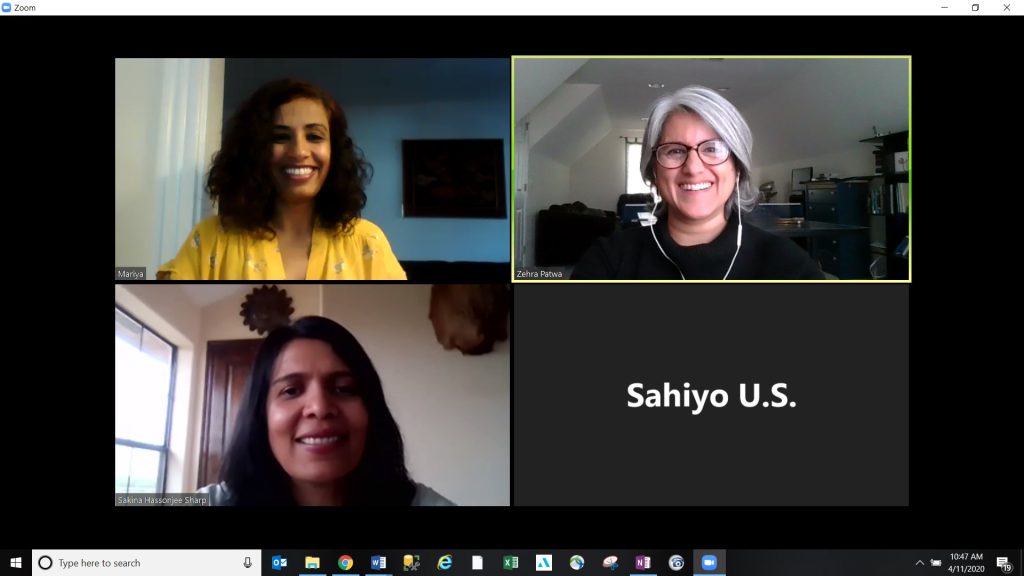
By Miranda Dobson “For many parents in the Bohra community who are thinking about having their daughters undergo female genital cutting, the delay that COVID-19 has caused is likely not a big deal, as it can happen any time from age 7. There is no time limit.” Aarefa Johari is a co-founder of transnational organisation Sahiyo, based in Mumbai, India. “For those who are unsure about whether or not to cut their daughters, this delay could mean there is more time to debate, and hopefully they may change their minds.” Sahiyo works with Asian communities, with a special focus within the Dawoodi Bohra community, which is largely concentrated in India and Pakistan, but also dispersed globally across Europe, North America and Oceania. Sahiyo focuses on ending female genital cutting (FGC), often known as female genital mutilation (FGM), and within the Bohra community as khatna by engaging in a variety of storytelling programs to help elevate dialogue on the issue and build awareness of its harms How is COVID 19 affecting the practice of female genital cutting? Fellow co-founder Mariya Taher, based in Boston, U.S., explained that the impact of the coronavirus pandemic on female genital cutting in the North American Bohra community and other FGC practising communities is likely similar. “It’s difficult to know if FGC is happening more or less right now. Broadly we know that gender-based violence is rising. Domestic violence is rising. The thing that is most immediately concerning is that necessary support services aren’t in place. “There is a poor response from law enforcement, and things like mental health services which were already lacking for survivors of FGC, are even more vital now and just not in place. This is likely the most difficult hurdle right now.” Mariya outlined how the pandemic is also affecting progress around ending FGC at a more structural level. “In Massachusetts where I am, the state law against FGC has been delayed because there are more pressing things to look at right now. Legislation is not a solution in itself but a necessary step towards change, and needs to be supported by community outreach.” Before the coronavirus pandemic hit, much of Sahiyo’s work involved working with activists and community members through in-person retreats and Thaal Pe Charchas – conversations over food. Sahiyo is adapting to the crisis In the current climate, Mariya, Aarefa and fellow co-founders, Priya Goswami and Insia Dariwala, have needed to pivot and work increasingly through technology and digital spaces. “A strength of Sahiyo’s is our digital presence,” Mariya added. “We’re able to still connect with community members in that way, and we held our first ever digital activist retreat in April, which was supposed to be in New York in person. “It was an experiment and we also had men attending for the first time, which was really cool. What surprised me was how engaged people were, and how much they wanted to talk about FGC, at a time when so much else is going on. I think it was very cathartic at a time when people just need an outlet more than anything.” Pivoting to digital advocacy Sahiyo has been able to work to their strengths as communicators at this time, and use digital spaces to convey messages, and to great success. They’ve held webinars with over 300 people in attendance, and continue to share survivor stories on their social channels through a project with StoryCenter called Voices to End FGM/C. Aarefa shared how Sahiyo India is likely to follow suit. “We had planned to have some community events at this time, which haven’t been possible. These could now happen virtually as a way to reach out to people. It’s encouraging how well this went in the U.S.” Sahiyo India has also recently launched the first iteration of an exciting new app. “It’s called Mumkin, and it’s about making difficult conversations possible. We’re excited to be rolling it out at a time when digital advocacy and communications are so important.” Aarefa and Mariya both recognised how COVID-19 is likely to affect communities and their work going forward on a range of levels. “It’s important to acknowledge that we’re living in this altered reality. We can’t just talk about FGC without talking about COVID – it’s not relatable and it doesn’t feel authentic because it’s the issue that everyone is facing,” Mariya told us. “In general, we’re seeing a shift in the social sector. COVID will be a focus for a lot of grants for a while. That’s really important and should be the case. I hope though that it doesn’t mean organisations will force-fit COVID into their work. Of course it’s vital, but it shouldn’t relegate other issues, particularly gender-based violence, which we know is being driven by barriers pandemic responses have put up.” (This interview was carried out via video conferencing and written by Orchid Project’s Senior Communications Manager, Miranda Dobson, speaking to Mariya Taher and Aarefa Johari, co-founders of Sahiyo. The piece was originally published on Orchid Project’s website.)
How I learned female genital mutilation is happening in India
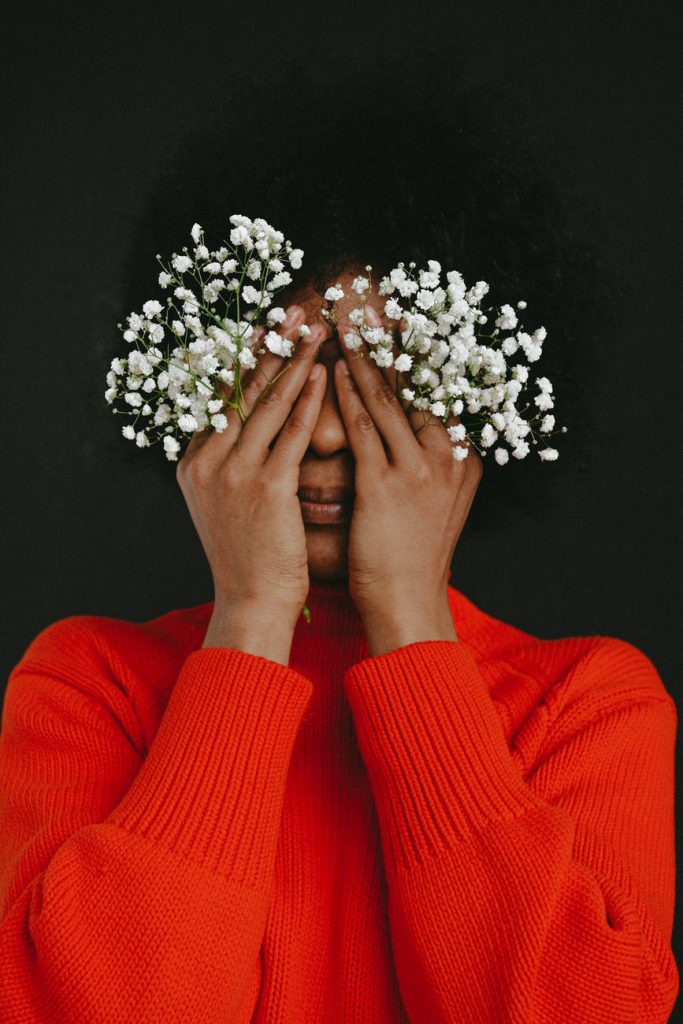
By Thirupurasundari Sevvel Country of Residence: India How do I start? How do I explain my first realization that there is a practice called female genital mutilation? It was a typical day. During my master’s program in France, I was working with a couple of my friends talking about so many different random things. The topic shifted to sexuality, human rights, and how the female body is viewed. I said as long as the female body is looked at as property or a commodity, the problem won’t be solved. Everyone wants to take ownership. Anyone can talk about bodies or sexuality. They can try to shut us inside the doors of the world. But what we as women do with our bodies is in our hands. “What if that essense of your body is taken from you?” a friend asked. “What if there is a sense of ugliness thrusted inside your mind about being sexual, and your sexual organ is scrapped and sewed up?” Silence filled the room. That’s how I learned about female genital mutilation. It was shocking to realize it is happening in India. I realized it has actually happened to someone I personally know, but someone who was defending the practice and saying, this is our culture and it’s not wrong. It was shocking that something I thought was happening in different parts of the world, has happened in the state I lived in. The friendship with her became strained because she felt I was talking against her religion, her faith, her family, and her community. For a second I thought–am I doing something wrong, am I intruding on someone’s faith? But her sister gave me another point of view of how it affected her emotionally, and I started meeting other women. That’s when I understood. It was social conditioning at play–being made to believe it is right and has to be done. There has been a lot of backlash, but even if one child could be spared or saved–the struggle would be worth it. My friend has a daughter now and has taken a stand that she won’t do it to her. Our friendship isn’t public anymore since her family feels I am the reason for her becoming a rebel. When will they understand that it is a human rights violation? In 2015, I started doing storytelling for adults and children on the topics of body positivity, FGM, the human body, understanding the body, and consent in the Tamil language. This is a very small way to create awareness and a basic step to change the social construct and mindset. The storytelling resonated with a lot of participants. We realized many wanted some time to talk to someone who could listen without judgment. When we have a discussion, we start with this quotation from the book Desert Flower by Waris Dirie, who is a Somali model, author, actress, and human rights activist in the fight against FGM, and let each participant share points on what they feel about it. I feel that God made my body perfect the way I was born. Then man robbed me, took away my power, and left me a cripple. My womanhood was stolen. If God had wanted those body parts missing, why did he create them? I just pray that one day no woman will have to experience this pain. It will become a thing of the past. People will say, “Did you hear, female genital mutilation has been outlawed in Somalia?” Then the next country, and the next, and so on, until the world is safe for all women. What a happy day that will be, and that’s what I’m working toward. In’shallah, if God is willing, it will happen. The impact of organizations, books, movies, videos, social media campaigns, study materials, and awareness posters is huge. The problem is that it’s a secretive ritual. As children, they may also think that it happens to every girl, or they may try to block the painful memory. Sahiyo, which means female friend, started to engage in dialogue with the community to find a collective solution toward ending FGM. The materials, information, and stories shared created a lot of change and awareness. A video that came out in 2018 of three firsthand accounts of khata in India created an impact on social media. The work of Masooma Ranalvi, an FGM survivor and activist from India, founder of WeSpeakOut, has also created a lot of ripples and change. In February 2019, a group of women from the community urged political parties in India to take steps to end FGM in their community and made the issue part of their poll manifestos. The collective works of these organizations and individual voices can put an end to this practice. There may not be many official records about FGM in India, but that does not mean it is not happening. It is a practice everyone should be against so that the girl children from the next generation do not undergo FGM. Speaking up is the only way forward.
Job Opening! Social Media Consultant for a new Sahiyo project in India

Social Media Consultant position for an exciting new project on Female Genital Cutting in India Are you a social media person with a passion for women’s and human rights? Do you have the skills to design social media campaigns? If yes, then you could be working for an exciting new tech-based project in the movement against Female Genital Cutting (FGC) in India. Sahiyo is an international organization working to end FGC among Asian communities. We are looking for a proactive, efficient and bright social media consultant to join the team on a freelance basis to help us promote the app. Project duration: 1st June 2020 – 30th September 2020 Time commitment required: 10 hours per week (Flexible) Main work involved: Work with the Sahiyo team to design social media campaigns to promote the new project. Excellent social media skills to help us design outreach campaigns. Pro at social media channels, knows how to post across platforms. Crafting communication, willingness to promptly work out a response Qualifications: We are looking for an individual who has: 1-2 years of experience in social media campaigning strong skills in writing, design thinking, campaign strategizing an eagerness to learn about the nuances and complexities of FGC in India sensitivity towards cultural appropriateness and the needs of survivors of FGC and other community members The efficiency with respect to time management and being results-oriented Passionate about the cause and willingness to be flexible with hours The individual could be based anywhere in India but must be comfortable with working remotely and prompt with email communication. To apply, send your CV with a cover letter to priya@sahiyo.com
Why are we doing this? A Thaal pe Charcha participant questions female genital cutting
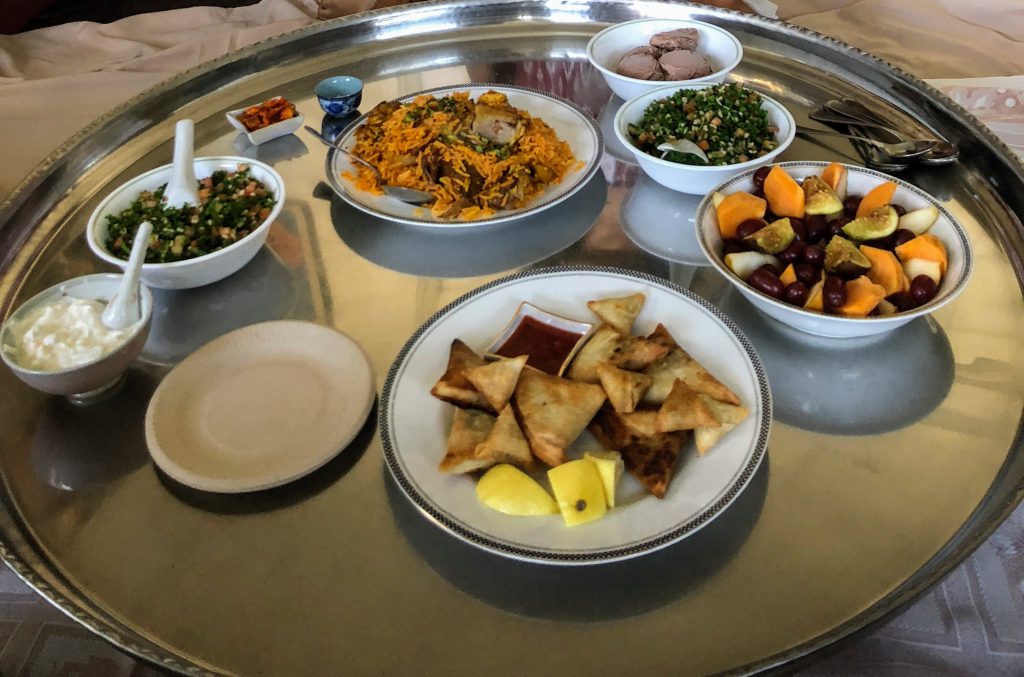
By Anonymous Country of Residence: India Age: 32 I have been part of the Sahiyo Thaal Pe Charcha group meetings for a while and have found it an eye-opening concept. The more I’ve been involved, I’ve become more aware of female genital mutilation/cutting (FGM/C). In the first meeting, I came to know it as a social stigma that we women face due to misguided traditions. Knowing that more people support the cause made me feel a bit more confident to talk about it. Hearing about the issue of FGM/C made me more aware that people blindly do it because their familes do it. Some of them may do it out of fear and for the approval of society. During the recent February meeting we were shown a movie, A Girl from Mogadishu, based on the life of a Somalian FGM/C survivor and activist, Ifrah Ahmed. Her whole life she believed the tradition of FGM/C needed to be followed, as her ancestors did the same, so she never questioned it. But migration opened her eyes to the fact that what happened to her was not right. She did not deserve to suffer pain just because her society carried this practice for centuries blindly. I, myself, find a lot of people like my family and friends who are afraid to ask the questions: Why are we doing this? Is it necessary to hurt a girl in childhood? That psychological wound is so deep and may never be healed. No one can remember their childhood memories perfectly, but when something painful happens for some, it’s impossible to forget. I really want more people to share their experiences, come out of denial and support the cause to pledge to not let the next generation or anyone undergo the same pain they, themselves, might have undergone.
Sahiyo Activist Retreats
India Activist Retreat – 2019 The first annual Sahiyo Activists’ Retreats in the US and in India were organized in 2018 for advocates working to end Female Genital Cutting (FGC). The primary aim of these retreats in each country is to bring together ‘activists’ speaking out against FGC — people who work either publicly or anonymously to raise community awareness about the need to end this harmful practice. The retreat now takes place annually, in both India and the US. Sahiyo understands it takes many to bring about social change, and as a result we work with individuals, organizations and coalitions in a collaborative fashion. As advocates and activists, we are better together and can find the best solutions if we collaborate and work as one. We also recognize that many advocates speaking out against FGC have been working in isolation from each other. The Sahiyo Activist retreats work towards building a network of Bohra activists by 1) strengthening relationships with one another 2) Sharing best practices and providing tools for activists to utilize in their anti-FGC advocacy work moving forward. The retreats are also an opportunity for advocates/activists to discuss both challenges and opportunities they have found in advocating against FGC. Read about participants’ experiences at Sahiyo’s activists retreats here. US Activist Retreat 2018 India Activist Retreat 2018 US Activist Retreat 2019
An ode to every woman fighting social norms around the world
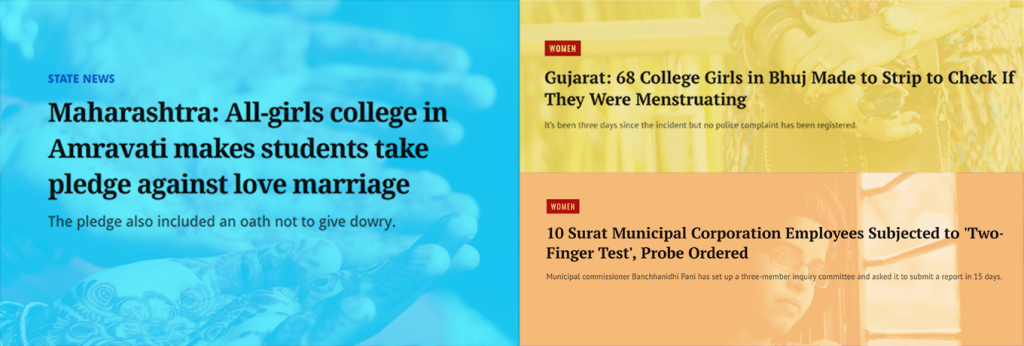
By Geethika Kodukula Country of Residence: USA (This month, Indian news reported three disturbing incidents targeting women and girls. In the first, 68 students at a women’s college in Gujarat were forcibly strip-searched to prove they were not on their period because the college’s religious administration does not allow menstruating women to enter temples or kitchens or even touch other people. Days later, female college students in Maharashtra were forced to take an oath that they would never marry for love — instead, they would only marry husbands chosen by their parents. In a third shocking incident, 10 women applying for a government job in Gujarat were stripped and subjected to a “two-finger test” to check for pregnancy. This essay is a cry of outrage against such acts of oppression in the name of social norms; it is an ode to women all over the world, who are forced to fight the norms of patriarchy every day in order to simply survive.) What makes a woman? Is it her kindness, generosity, friendship, ability to work for a living, or take care of her family? Men can do all these things just as well. But a woman can give birth, while a man cannot. We revere this ability, celebrate it and encourage girls to want it for themselves. But not on their terms. We want to control it and shepherd it. At an age when girls have no idea of sexuality or reproduction, we invade their bodily boundaries in the name of purity and tradition to cut their genitals. We call it khatna, sunnah, khafz, female circumcision, and practice it in more cultures around the world than we’d like to admit. We do this to our daughters in spite of the physical and psychological pain it caused us, ourselves. Girls and women who have undergone the procedure tell us that it does more harm than good. At an age when biology decides that she becomes a woman, we likely celebrate menarche, the first period. In many cultures, we make a fuss, invite people over to bless our little girl who can now bear children and buy her new clothes, jewelry, and gifts. But she’s shocked at the blood between her legs. All her life, television commercials have shown the liquid that goes on pads and tampons as a soft blue. What is this business with blood? Is she dying? We don’t talk about that. We call the process various euphemisms. We treat these girls as impure, make them sit and sleep separately, wash their clothes and any bedding they may have touched, and essentially quarantine them every month because of this “curse” that gives us the “blessing of a child.” We may subject her to strip searches in an institution dedicated to education, no less, to prove that she is not bleeding and can, therefore, sit, eat and mingle with her friends. What is at threat of being stripped is her dignity, which we say we value the most. We treat nearly grown adults as impure, untouchable, and stigmatize and hide all of it from the males in the house. Imagine the anxiety and resentment these young women may build toward their bodies over a completely normal biological phenomenon. We speak to females in hushed tones about how to dispose of evidence and pretend as if nothing changed. If a woman cannot give birth due to any reason (choice being the least respected one of them), we worry, berate, label, and shame them. There is no pleasing us. We don’t want her to look at or talk to boys for the first twenty years of her life. Then we want her to magically know how to live with a man and anticipate his wishes and whims. We want young schoolgirls to formally pledge that they will not marry for love. Let’s consider that. Even if a woman found another human being she considers compatible and wants to spend her life with him, she should reject him and marry a stranger selected by her parents based on the family he was born into, his religion/state/caste/creed, occupation, and the family’s assets and holdings. How many of these things have a real bearing on the partner he will be? Let’s say she does marry the male her parents chose for her. What if her husband or his family wants to test her “virginity”? There are sects in India who take this very seriously. Amazon sells a product to fake your way into being a virtuous bride if you are one of the millions of women whose hymen tore while bicycling or dancing. Or if you didn’t bleed profusely the first time you had sex because–to borrow an idea this HuffPost article offers–the hymen is not a plastic wrap stretched over the Tupperware of your virginity. Imagine the disorientation this young girl may experience after being shamed and humiliated for intercourse she may not have had. We urge newlyweds to get busy. We urge the woman to not put her career before her family and have many children. Television and movies keep showing childbirth as a briefly excruciating, but ultimately, a gratifying experience. No one says anything about postpartum complications, anxiety, or depression. Millions of people watch the Oscars but an ad about new moms’ preparedness will never reach our women since it was rejected by ABC to air. In her homestead our woman lives as happy as one can be in her place in society. But according to Krushnaswarup Dasji, she cannot cook for her family for five days a month, (longer if she has reproductive issues). Her husband’s family never got around to teaching him how to cook. This is a dilemma, indeed. Her husband and sometimes her children resent her for making them eat take-out. As she enters menopause, she is viewed as less useful than she was, no longer able to bear children. Having lived a life carrying back-breaking gender norms, she dies to finally be at peace from societies’
Khatna within the Bohra community: A Struggle of Tradition and Modernity
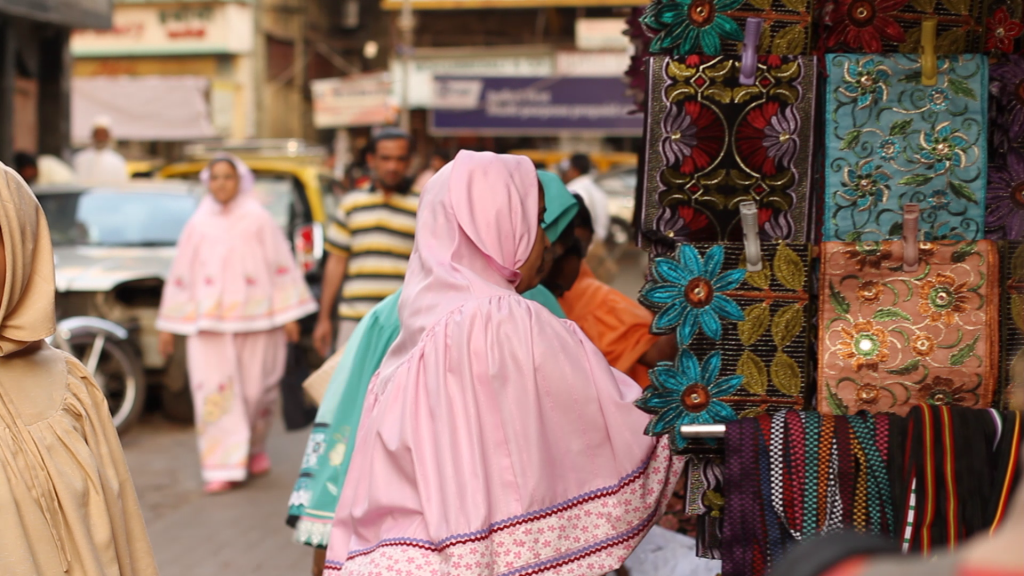
By Fatema Kakal (This is Part I in a series about female genital cutting within the Bohra community. Read Part II here) The Bohra Muslims, who have the reputation of being modern and progressive, secretly practice khatna, or female genital mutilation/cutting (FGM/C) within India, as well as in other parts of the world. I learned about this over dinner with my family when I was 17. A woman who went by the pseudonym of Tasleem had recently filed the first public petition asking the Syedna (High Priest/religious leader of the Bohra community) to stop practicing khatna. While it shocked me, it also left me intrigued, wondering why this community continues such a harmful practice. A few years later, as I was pursuing my postgraduate degree, I had the opportunity to answer the questions that my 17-year-old self had. For my Masters dissertation, I decided to use a new lens to understand the community better, and get a deeper insight into what could be the factors influencing the Bohras to continue khatna. As I worked on my research, I read about FGM/C – a lot. I also read about the Bohra community from an ethnographic lens. I reviewed literature, debates and discourses, narratives of survivors, and conducted interviews with activists working to end FGM/C (from Sahiyo and other organisations). I used French social theorist Michel Foucault’s concepts of sexuality, biopower and pastoral power to understand FGM/C. Religion and religious power can often be political, and can be woven through various forms, like the sensual, corporeal and the imaginary. Religious leaders are crucial here, who are defined by their status within religion. Thus, religious leaders have pastoral power where they lead, supervise and guide people. Pastoral power operates through the body, forming a locus for biopower, a form of control over people’s bodies. Religion uses sexuality as a mechanism for control, discipline and policing bodies. FGM/C then, is a practice used by religious leaders to control women and children’s bodies and sexuality. I used Tammary Esho’s framework of FGM/C as a socio-cultural-symbolic nexus. Esho has conduced extensive research on FGM/C and sexual and reproductive health and rights. It is a culturally mediated process of socialization, that transfuses gendered identity. Khatna is a cultural practice passed down through generations to socialize girls into the community. The pain felt during the cutting is considered a rite of passage and is symbolic of fertility and womanhood. It is meant to define a woman and her femininity, and her identity as a Bohra woman. To understand how these concepts actually applied to khatna and the Bohra community, I analysed narratives of survivors collected and shared by Sahiyo and We Speak Out in their reports, and Goswami’s documentary A Pinch of Skin, I found a few overarching themes within their stories. Khatna was seen as a religious and traditional practice, and was considered to be a tool to control women’s sexuality, and maintain morality. Most of the survivors’ experiences involved traditional cutting by a dai or a midwife, in unhygienic conditions; where mothers and other women in the family played a vital role. It was a highly secretive and taboo practice, but normalized and obligatory, and passed down through generations. Many women claimed to feel anger and shame, remembered it being painful, and asserted it affected their sexual lives, and crucially, being a traumatic event in their lives. I interviewed activists as key informants who highlighted that the silence around khatna was breaking – with Tasleem’s petition in 2012, and the arrests in the United States and Australia. Religious leaders also began addressing it through sermons and letters issued to community members. The public interest litigation in the Indian Supreme Court in 2017 and the growing anti-FGM/C movement rising from within the community were important for people to hear different voices around khatna. This in turn, led to a shift in the rationale for the practice. While it was earlier believed that it controls women’s sexuality, the Bohra clergy was increasingly scrutinized for controlling women’s bodies. The clergy changed the justification behind the practice, by claiming it is a religious practice and a marker of Bohra identity. The growing anti-khatna movement was also considered an attack by Westernization. Thus, continuing khatna became a statement defying Western notions of appropriate religious customs and traditions. The Bohra clergy encourages people to visit medical professionals to have their daughters cut safely, promoting medicalisation. Medical facilities are increasingly accessible for people in the Bohra community, especially in big cities, who claim to do the cutting in a safer, hygienic way, thus perceived to be potentially minimizing risk and trauma. The Bohra clergy is an important agent in the continuation of khatna. People’s lives are heavily influenced by the Syedna and the clergy due to their pastoral power over the community. They are deeply involved in people’s lives, and their pastoral power has political power. Khatna is a form of control over girls’ bodies and sexuality, which is considered aberrant. Thus, the clergy enforces biopower through khatna, to ensure women uphold values of fidelity and morality. People in the community however, look at khatna at a socio-cultural-symbolic nexus. Khatna is significant for forming a girl’s identity as a Bohra woman, and has cultural and symbolic significance as a rite of passage. Women are bearers of culture, and it is a tradition passed down through generations. Thus, khatna continues to be practiced in the Bohra community, due to social, cultural and religious norms of womanhood, purity and sexuality. The clergy has significant influence over the community and the family. Law can play a crucial role in discouraging people from continuing khatna. Thus, in order to end the practice, it is important to engage the various stakeholders in the community who protect the practice, especially women who are often primary decision-makers for children to undergo khatna.
Taking the anti-FGC movement forward, with Thaal Pe Charcha participants
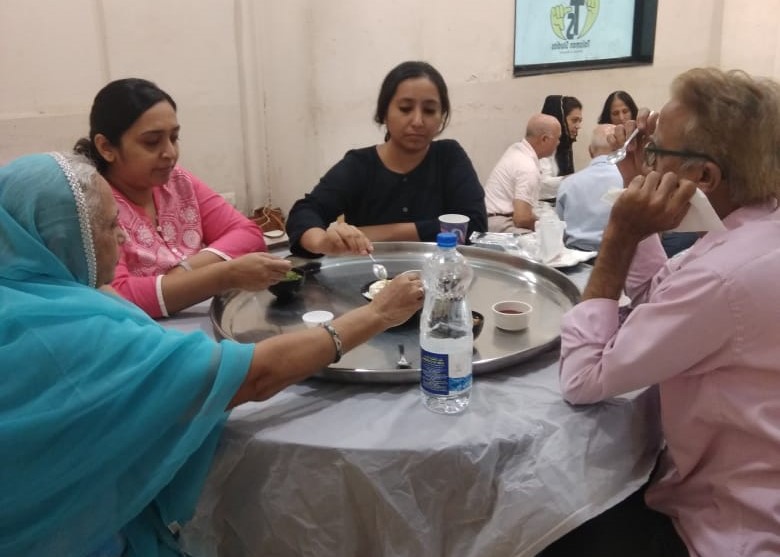
On 17th November 2018, Sahiyo hosted its seventh Thaal Pe Charcha (loosely translated as “discussions over food”) in Mumbai, India, with a diverse group of 17 participants. TPC is a flagship Sahiyo program where Bohra women are brought together in a private, informal setting to bond over food and discuss issues that affect their lives, particularly Female Genital Cutting or Khatna. For the November event, two participants travelled specially from Pune and Kerala respectively. During this TPC, participants were divided into two groups that drew up plans for taking the movement against FGC forward through two different approaches. One group discussed engagement with lawmakers, medical professionals and other social stakeholders, as well as raising social awareness about FGC through animation videos and other such media. The second group discussed taking Thaal Pe Charcha itself forward, by reaching out to more and more members of the community and bringing in new participants along with them for the next TPC. They also discussed plans to reach out to Bohras in rural areas and organising their own TPC events with their friends and relatives. The groups formed separate Whatsapp groups to stay in touch and monitor the progress of their activities.
When Thaal Pe Charcha participants met Mumbai’s Veteran Activists
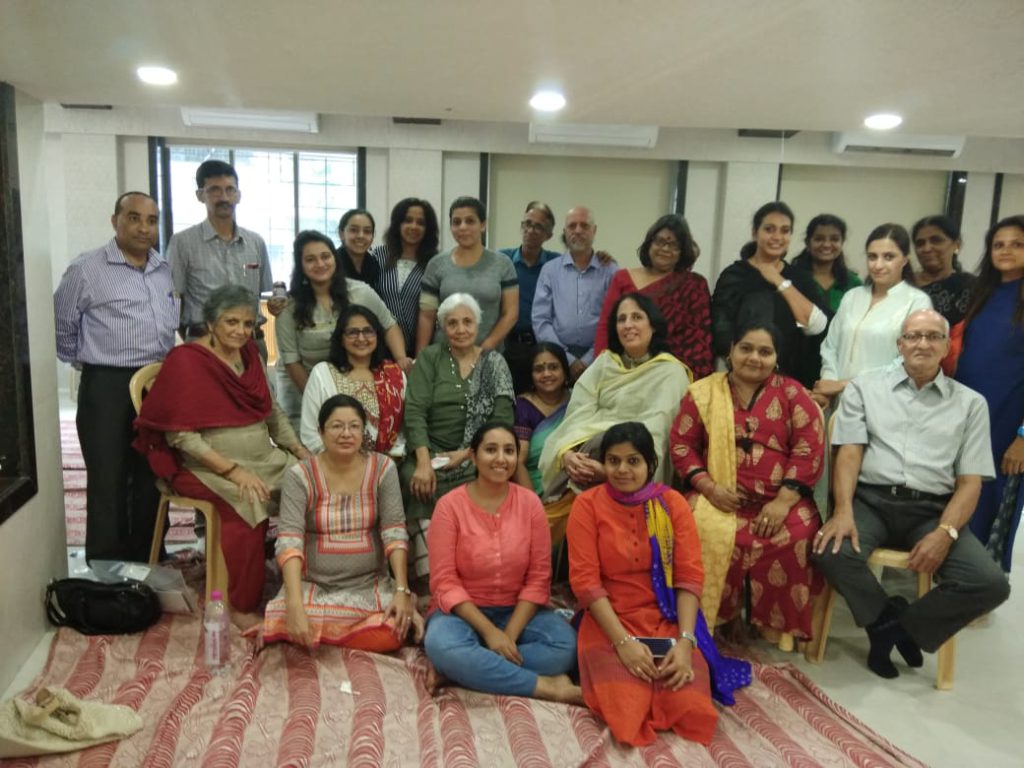
On 4th August 2018, Sahiyo hosted its sixth Thaal Pe Charcha (loosely translated as “discussions over food”) in Mumbai, India. TPC is a flagship Sahiyo program where Bohra women are brought together in a private, informal setting to bond over food and discuss issues that affect their lives, particularly Female Genital Cutting or Khatna. The TPC in August was unique because in addition to several regular and new participants from the Bohra community (five of whom were men), the event also featured women leaders and activists from various non-profit organizations working on women’s rights. They were invited to interact with participants and share their experiences, struggles and the knowledge gained in their journeys as women’s rights advocates. One of the activists was Flavia Agnes, a veteran feminist lawyer from Majlis, who was at the forefront of India’s women’s movement in the 1980s. Agnes shared her story of surviving domestic violence and going on to become a prominent lawyer helping other women with legal support in their fight for justice. Other guest speakers included Noorjehan Safia Niaz, the co-founder of the Bharatiya Muslim Mahila Andolan (BMMA), a prominent Muslim women’s organisation, and her team of two women Qazis (Islamic jurists) from BMMA. The three of them spoke about their struggle to get the practice of unilateral instantaneous divorce or triple talaq to be recognised as unconstitutional in India, as well as their efforts to bring justice to Muslim women by training women to become Qazis — a profession only open to men within traditional Islam. Dr. Sheroo Zamindar, a gynaecologist from Ahmedabad, also explained the medical consequences of undergoing Khatna. Participants of the TPC were enthusiastic in their interactions with the guest speakers and in their feedback to Sahiyo, mentioned that they appreciated the diverse perspectives that they offered during the event.
